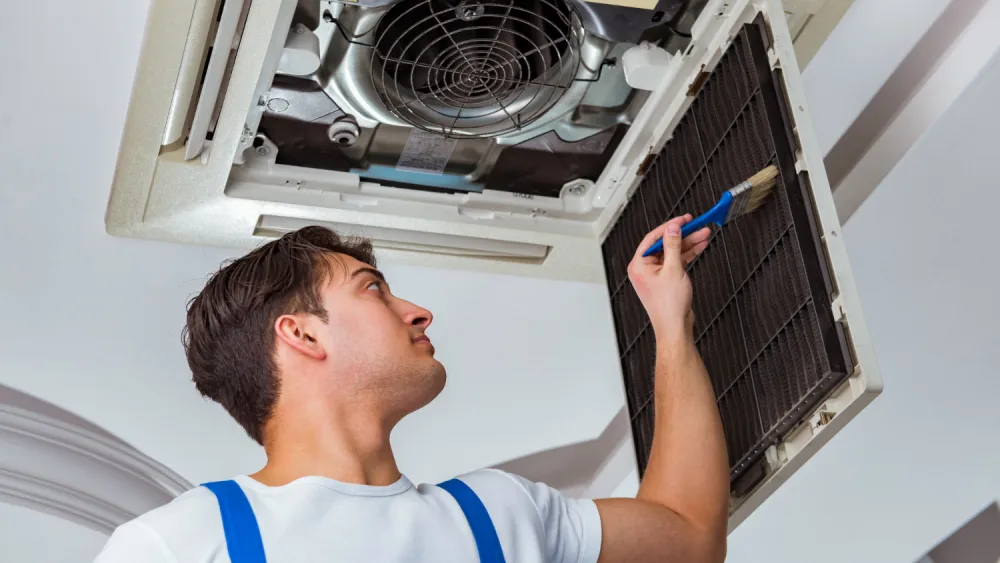
Summer is here, and with it comes the inevitable reliance on your air conditioner. But before you crank it up and expect icy breezes, ask yourself: has your AC unit had its annual check-up? Neglecting routine maintenance can lead to decreased efficiency, higher energy bills, and even costly breakdowns. That’s why creating and following an AC servicing checklist is crucial for a cool, comfortable, and cost-effective summer.
Think of it as preventative medicine for your cooling system. Just like you wouldn’t skip your own annual doctor’s visit, you shouldn’t neglect your AC. Here’s the ultimate checklist to ensure your AC is in top-notch condition:
I. Air Filter Inspection and Replacement:
- The Importance: A dirty air filter restricts airflow, forcing your AC unit to work harder and consume more energy. It also circulates dust and allergens throughout your home.
- The Checklist:
- Inspect: Check your air filter monthly, especially during peak usage.
- Replace: Replace disposable filters every 1-3 months, or as needed. Washable filters should be cleaned according to manufacturer instructions.
- Type: Use the recommended filter type for your unit to ensure optimal performance.
II. Coil Cleaning: Inside and Out:
- The Importance: The evaporator coil (inside) and condenser coil (outside) are responsible for heat exchange. Dust and debris build-up reduces their efficiency.
- The Checklist:
- Evaporator Coil: Consider professional cleaning to avoid damaging sensitive components. You can gently vacuum visible dust.
- Condenser Coil: Clean the exterior coil regularly. Turn off the unit, remove debris like leaves and twigs, and gently spray with a garden hose (low pressure).
- Fins: Straighten any bent fins on the condenser coil with a fin comb.
III. Condensate Drain Line Inspection:
- The Importance: This line removes condensation produced during the cooling process. Blockages can lead to water damage and mold growth.
- The Checklist:
- Inspect: Check the drain line for clogs.
- Flush: Pour a cup of diluted bleach or vinegar down the drain line to remove algae and prevent future blockages.
- Professional Assistance: If you suspect a significant blockage, call a professional.
IV. Fan Maintenance: Inside and Out:
- The Importance: Both the indoor blower fan and the outdoor condenser fan circulate air for cooling. Proper function is essential.
- The Checklist:
- Clean: Remove dust and debris from both fans.
- Lubricate: Check the fan motor for lubrication points and lubricate according to manufacturer instructions.
- Inspect: Look for signs of damage, wear, or unusual noises.
V. Electrical Component Inspection:
- The Importance: Electrical components can degrade over time, leading to potential safety hazards and decreased performance.
- The Checklist (Professional Required):
- Wiring: Have a qualified technician inspect wiring for damage or loose connections.
- Capacitors: Check capacitor health and replace if necessary.
- Voltage/Amperage: Ensure proper voltage and amperage readings.
- Safety: Check for signs of electrical arcing or burning smells.
VI. Refrigerant Level Check:
- The Importance: Low refrigerant levels indicate a leak and can significantly reduce cooling efficiency.
- The Checklist (Professional Required):
- Leak Detection: A professional technician can use specialized equipment to detect refrigerant leaks.
- Recharge: If necessary, have the refrigerant level recharged to the manufacturer’s specifications.
VII. Duct work Inspection:
- The Importance: Leaky duct work can lose significant amounts of cooled air, increasing energy bills and reducing overall comfort.
- The Checklist:
- Visual Inspection: Inspect accessible duct work for visible holes, tears, or disconnections.
- Sealing: Seal any leaks with duct tape or mastic sealant. Consider professional duct sealing for optimal results.
VIII. Thermostat Calibration:
- The Importance: An inaccurate thermostat can lead to inefficient cooling and inconsistent temperatures.
- The Checklist:
- Compare: Compare the thermostat reading to a separate thermometer.
- Adjust: Calibrate the thermostat according to the manufacturer’s instructions (if applicable).
- Consider Upgrade: If your thermostat is old, consider upgrading to a programmable or smart thermostat for better energy efficiency and control.
When to Call a Professional:
While many of these tasks can be performed by homeowners, certain aspects of AC servicing require professional expertise. It’s best to schedule an annual check-up with a qualified HVAC technician to address:
- Refrigerant leaks and recharging
- Electrical component inspection and repair
- Internal unit cleaning and maintenance
- Complex troubleshooting
Benefits of Regular AC Servicing:
- Increased Efficiency: Lower energy bills and reduced environmental impact.
- Improved Cooling Performance: A cooler, more comfortable home.
- Extended Lifespan: Preventative maintenance can significantly extend the lifespan of your AC unit.
- Reduced Repair Costs: Early detection and repair of minor issues can prevent costly breakdowns down the line.
- Improved Air Quality: Cleaner filters and coils contribute to better indoor air quality.
By following this comprehensive AC servicing checklist, you can ensure your AC unit is ready to tackle the heat and keep your home cool and comfortable all summer long. Don’t wait until your AC breaks down in the middle of a heatwave. Take proactive steps now to enjoy a worry-free summer of cool comfort.

